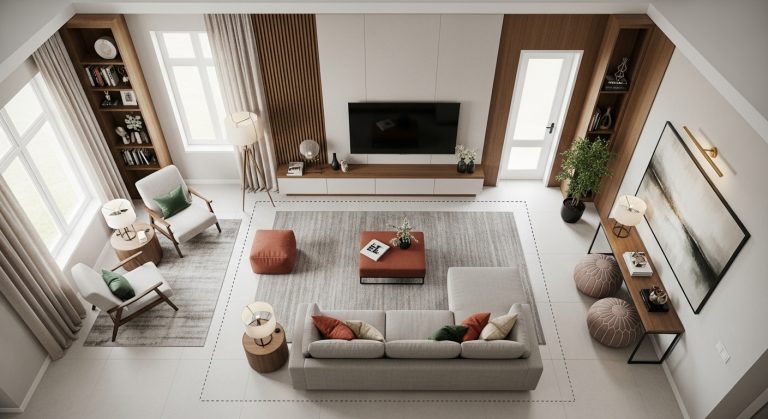Why Ventilation Is Important in Modern Homes?
Modern homes are designed to be energy-efficient, airtight, and insulated. While these features reduce energy bills, they can also trap pollutants, moisture, and stale air inside. Without proper ventilation, a house may feel stuffy, develop mold, and even pose health risks. Ventilation is the hidden factor that balances comfort, indoor air quality, and structural health.
In this article, we explore why ventilation matters more than ever, how it works, and what homeowners should know about different systems.
The Role of Ventilation in Homes
Ventilation refers to the process of exchanging indoor air with fresh outdoor air. In modern housing, it serves three critical purposes:
- Health: Removes indoor pollutants, allergens, and carbon dioxide.
- Comfort: Controls humidity and temperature, preventing stuffiness.
- Protection: Prevents structural damage caused by moisture buildup.
Why Modern Homes Need Ventilation More than Older Homes
Older houses naturally allowed air leakage through gaps in walls, windows, and roofs. Today, energy codes require homes to be tightly sealed to conserve heating and cooling. While this is efficient, it also means:
- Less natural air exchange.
- Greater risk of trapped pollutants.
- Increased importance of mechanical ventilation systems.
Types of Ventilation
Natural Ventilation
- Relies on windows, vents, and doors.
- Low-cost but weather-dependent.
Mechanical Ventilation
- Uses fans, ducts, and HVAC systems to circulate air.
- Provides consistent airflow regardless of weather.
Hybrid Ventilation
- Combines natural and mechanical methods.
- Ideal for balancing efficiency and comfort.
Health Benefits of Proper Ventilation
1. Reduces Indoor Pollutants
Indoor air can be 2–5 times more polluted than outdoor air (EPA). Sources include cleaning chemicals, cooking fumes, and off-gassing from furniture. Ventilation dilutes these pollutants.
2. Controls Humidity
High humidity encourages mold, dust mites, and bacteria. Ventilation maintains balanced humidity levels (30–50%), preventing growth of harmful organisms.
3. Prevents Carbon Dioxide Buildup
Poor ventilation leads to CO₂ accumulation, causing fatigue, headaches, and reduced cognitive performance.
4. Improves Respiratory Health
Ventilation helps reduce allergens such as pollen, pet dander, and dust, benefiting people with asthma or allergies.
Structural Benefits of Ventilation
- Moisture control: Prevents condensation on walls and windows.
- Protects insulation: Keeps insulation dry and effective.
- Extends roof life: Attic ventilation prevents ice dams in winter and overheating in summer.
- Avoids mold and rot: Prevents long-term structural damage.
Common Ventilation Systems in Modern Homes
Exhaust-Only Systems
- Fans remove indoor air.
- Common in bathrooms and kitchens.
- Affordable but can cause negative pressure.
Supply-Only Systems
- Fresh outdoor air is drawn in.
- Simple but may introduce unfiltered pollutants.
Balanced Ventilation Systems
- Supply and exhaust work together.
- Examples: Heat Recovery Ventilator (HRV) and Energy Recovery Ventilator (ERV).
- Most efficient and healthy choice for airtight homes.
Recommended Air Changes per Hour (ACH)
| Room Type | Recommended ACH | Purpose |
|---|---|---|
| Living Room | 0.35–0.5 | General comfort |
| Kitchen | 5–15 | Removes odors and cooking fumes |
| Bathroom | 8–12 | Controls moisture and odors |
| Bedroom | 0.35–0.5 | Maintains fresh air during sleep |
| Basement | 3–5 | Prevents dampness and mold |
Calculation Example: Fresh Air Needs
Airflow Required (CFM) = (Room Volume × ACH) ÷ 60
For a 200 sq. ft. bedroom with 8 ft ceiling:
- Volume = 1,600 cubic ft
- ACH = 0.5
- Airflow = (1,600 × 0.5) ÷ 60 ≈ 13 CFM
This means you need ventilation that provides at least 13 cubic feet of fresh air per minute.
Energy Efficiency and Ventilation
Modern systems like HRVs and ERVs exchange heat between incoming and outgoing air. This reduces heating/cooling losses while maintaining air quality.
Visualization Example
Imagine a bar chart comparing energy losses:
- Natural ventilation: 100% loss
- Exhaust-only system: 60% loss
- HRV/ERV: 20–30% loss
HRV and ERV systems clearly outperform in efficiency.
Common Ventilation Mistakes
- Blocking vents with furniture.
- Running exhaust fans without ducting outdoors (causes moisture in attic).
- Ignoring filter maintenance in mechanical systems.
- Oversizing or undersizing systems.
Statistics and Data
- The EPA reports Americans spend 90% of their time indoors, where pollutant levels may be 2–5 times higher than outdoors.
- Poor ventilation contributes to 40% of indoor moisture problems (Building Science Corporation).
- WHO estimates that 3.8 million deaths annually are linked to household air pollution globally.
Regional Perspectives
- Cold climates: Balanced ventilation with heat recovery prevents energy waste.
- Humid climates: Ventilation systems must control moisture to prevent mold.
- Urban areas: Air filtration is critical to reduce pollutants from traffic.
Case Study: Energy-Efficient Home in Minnesota
A new passive house used an HRV system to provide fresh air without energy loss. Air quality improved significantly, and heating costs dropped by 30% compared to similar homes without advanced ventilation.
Helpful Resources
- U.S. Environmental Protection Agency: Indoor Air Quality
- ASHRAE Ventilation Standards
- World Health Organization: Household Air Pollution
For a demonstration of HRVs, see this [YouTube guide](INSERT LINK).
For DIY ventilation improvements, see this [YouTube tutorial](INSERT LINK).
For attic ventilation strategies, see this [YouTube video](INSERT LINK).
Conclusion
Ventilation is no longer optional in modern homes—it is a cornerstone of health, comfort, and structural integrity. As houses become tighter and more energy-efficient, the role of mechanical ventilation grows more critical.
The right system ensures clean air, prevents moisture issues, and lowers long-term maintenance costs. Looking ahead, smart ventilation systems with sensors and AI will allow homeowners to maintain perfect indoor air quality automatically, ensuring healthier living environments for future generations.






